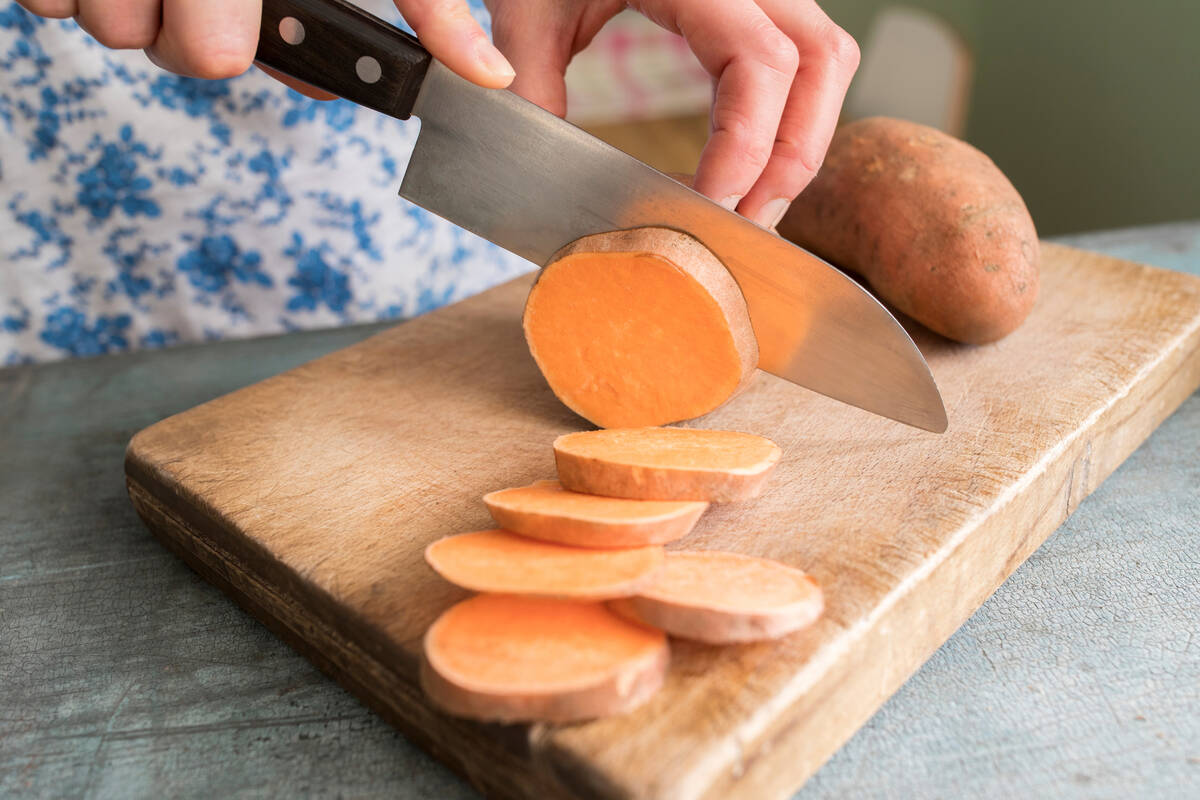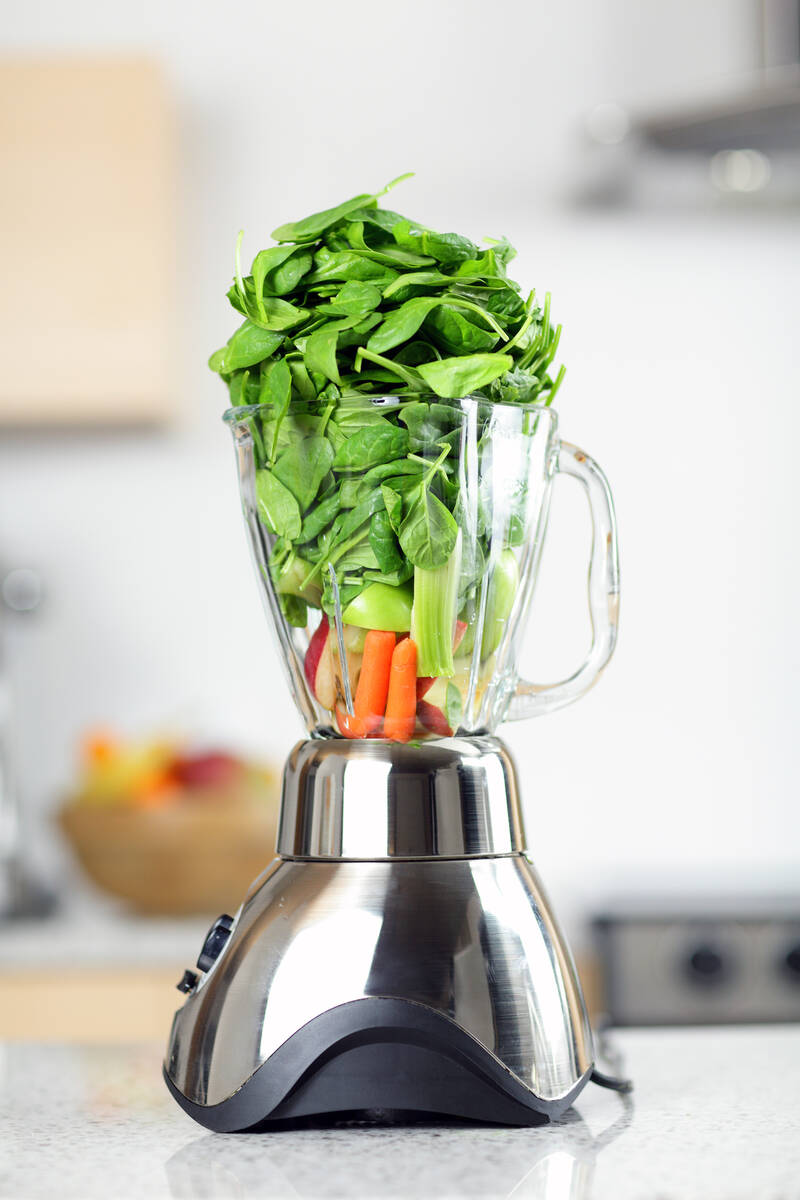How you prep your food can affect nutritional value
You probably know that what you eat is important for your health. And you might have given some thought to how you cook it, too.
But even before cooking, your approach to preparing food — such as by chopping, blending or grinding — “impacts the nutrition value,” says Dr. Luis Rustveld, a registered dietitian and an associate professor of family and community medicine at Baylor College of Medicine in Houston.
That prep work can affect how the body digests food and which nutrients it absorbs, he says.
Here are some examples to consider when you’re in the kitchen:
Juicing and blending
These two methods may seem similar, but they aren’t the same. Juicing extracts liquid from a food; blending takes the entire fruit or vegetable and cuts it into tiny bits.
Your body reacts to each one differently.
Juice can be digested quickly, Rustveld says, and that’s not always good. Take the example of an orange. One whole orange has about 16 grams of carbohydrates, with about 3 of those grams coming from fiber, according to the U.S. Department of Agriculture. The fiber from oranges slows how quickly carbs hit the bloodstream.
Juicing strains out fiber, Rustveld says, so that glass of OJ could cause unhealthy spikes in blood glucose.
And because juice doesn’t fill you up, you’re likely to drink more of it than if you eat something whole. Sticking with the orange example, few of us would eat four or five in one setting, but it takes that many oranges to provide 1 cup of juice, Rustveld says. That can add up to a lot of carbs and calories.
Blending, on the other hand, preserves some of the fiber. Research suggests that eating blended fruit may have a similar effect on blood glucose as eating whole fruit. Blended foods may also help you feel full.
A study published in the Journal of Food Science in 2012 found that blended grapefruit also had more phytonutrients — plant-derived substances that may boost health — than grapefruit juice.
Chopping
Cutting fruits and vegetables into small pieces can make it easier for your body to access some nutrients, Rustveld says: “There are certain foods that actually can benefit from cutting it up or blending it.”
Bright orange foods, such as carrots and mangoes, are loaded with antioxidants, he says, which can help fight inflammation and aging. Chopping those foods can break down cell walls, releasing the antioxidants.
Chopping peppers, spinach, potatoes or apple skins also helps release antioxidants, Rustveld says. And studies have shown the same effect with celery, lettuce and parsnips.
Similarly, Rustveld says, cutting up garlic and onions releases heart-healthy sulfur compounds.
Keep in mind, though, that once you cut up a fruit or vegetable, the clock is ticking because those antioxidants start to degrade when exposed to air. If you keep the foods on the cutting board for a long time before using them, you’re going to lose some of the benefits.
“You want to store them as quickly as possible in a tight container where they’re not exposed to air, or use them right away,” he says.
Grinding
Flax and chia seeds have become popular additions to many diets.
“Flaxseeds are loaded with plant-based omega-3,” Rustveld says. Those fatty acids have been linked to reduced risk for heart disease and cognitive decline.
Unfortunately, our teeth are not designed to grind flaxseed, he says. So unless you grind the seeds before eating them, you’re not going to get the full benefit.
Chia seeds are a little easier to chew, he says. But studies have shown that more nutrients are released by grinding them. Or try soaking them before eating, Rustveld adds.
Peeling
As a matter of taste, you might peel your produce. But that will change the nutrition, Rustveld points out. In the case of an apple, removing the peel will leave you with “a spongy material that is delicious, and it’s healthy,” but the peel you’re tossing has both nutrients and fiber.
Similarly, he says, the peel is where you’ll find most of the vitamin K in a cucumber.
But the effect varies by food. Tomato skins are full of healthy lycopene — an antioxidant that works as an anti-inflammatory — but boiling or steaming a tomato until the skin starts to loosen actually makes that lycopene more available to your body, he says.
Matters of taste
Preparation is about more than nutrition.
When you slice something up, it can cook more quickly. “If I am in a rush, I don’t have time to sit there and wait for my pork or my chicken to finish cooking. I will cut it up,” Rustveld says.
It’s also a matter of presentation. Some chefs wouldn’t want to cut a piece of chicken or a piece of fish. “It all depends on your preference,” he says.
And preparation affects taste. The chemicals released by chopping onions or cruciferous vegetables such as broccoli change their flavor. Foodies say that how you cut an ingredient affects how it absorbs other flavors from the dish.
Other factors
When it comes to health, how you prep a food matters less than what that food is, Rustveld says. After all, a chocolate cake is still a chocolate cake no matter how you slice it.
And whatever you’re eating, Rustveld says, the cooking method will make a big difference.
“Are you frying it? Are you baking it? Are you grilling it? Are you using air fry? Are you boiling it, steaming it, microwaving it? Are you putting butter in it?” All those will affect nutrition much more than how you cut it beforehand.
“Even though I can start with something very healthy,” Rustveld adds, “I can end up increasing my risk of cardiovascular disease by the way that I’m cooking it.”
Examples: Frying can add calories and unhealthy fat. Store-bought marinades can add excess sodium. And smoking meat can add harmful compounds. Steaming, broiling and stir-frying with a small amount of oil are among the healthier approaches.
In general, Rustveld says, “You don’t want to engage in any prepping strategies or methods that are going to render a very healthy food unhealthy.”


















